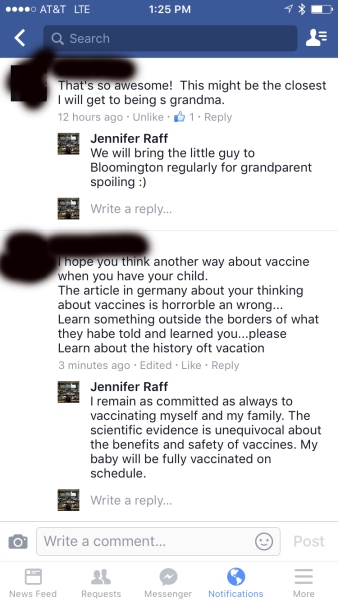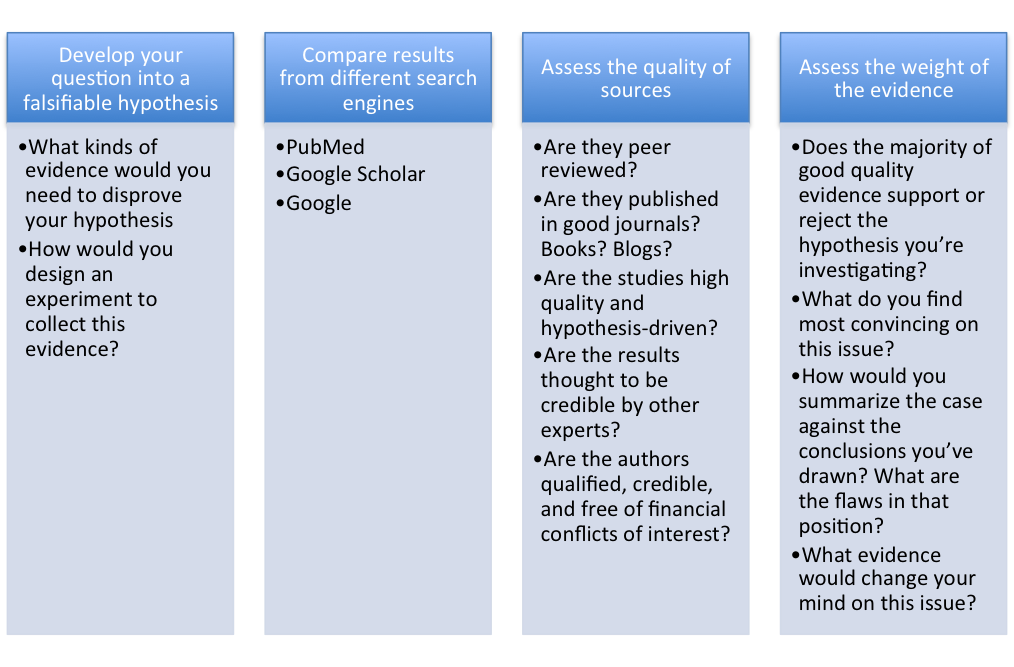How do scientists talk about race? For quite some time a small group of geneticists have been engaged in deep conversations about how best to convey the complexities of, and the relationship between race, DNA, and human variation to the general public. We come from different backgrounds—Ewan is the director of the European Bioinformatics Institute, Adam is a geneticist and science writer, Aylwyn is a human evolutionary geneticist, and I am an anthropological geneticist—and nationalities, but are united in our agreement that patterns of human genetic variation do not support the biological division of people into races.
Over the course of a year, we worked together on a statement that best reflects our consensus view of human genetic variation, race, and even the fraught topic of race and IQ. We wanted to correct the misconceptions that many people have about these topics, and directly confront a number of untrue ideas promoted by a small group of pseudo-scientists who refer to themselves as “race realists” or proponents of “human biological diversity” (HBD).
The result is a (rather lengthy) statement which Ewan has posted in its entirety here. I want to summarize its main points here with excerpts, but I encourage everyone to go read the whole thing. We intend for this statement to contribute to the ongoing conversation between scientists, social scientists, scholars in the humanities, the media, and the public.
(Also please note that I kept the original British spellings in excerpts that I quoted from the statement).
The biological race concept emerges from a particular history
Research in the 20th century found that the crude categorisations used colloquially (black, white, East Asian etc.) were not reflected in actual patterns of genetic variation, meaning that differences and similarities in DNA between people did not perfectly match the traditional racial terms. The conclusion drawn from this observation is that race is therefore a socially constructed system, where we effectively agree on these terms, rather than their existing as essential or objective biological categories.
Describing race as a social construct does not undermine its existence, nor its importance; it merely points out that there is no fundamental biological basis for race.
Human population structure is not race
Some people claim that the exquisitely detailed picture of human variation that we can now obtain by sequencing whole genomes contradicts this. Recent studies, they argue, actually show that the older notions of races as biological categories (some dating back to the 18th century) were basically correct in the first place. As evidence for this they often point to the images produced by analyses in studies that seem to show natural clustering of humans into broadly continental groups based on their DNA. But these claims misinterpret and misrepresent the methods and results of this type of research. Populations do show both genetic and physical differences, but the analyses that are cited as evidence for the concept of race as a biological category actually undermine it.
Geneticists use a variety of tools to visualise the subtle and complex patterns of genetic variation between people, and to mathematically cluster them together based on relatedness. Such methods are helpful for exploring data, but have also been the source of wider confusion. For example, Principal Component Analysis (PCA) plots often show distinct, colourful clusters of dots that appear to separate groups of people from different parts of the world. In some cases, these clusters even seem to correspond to traditional racial groupings (e.g. ‘Africans’, ‘Europeans’ and ‘Asians’). It is images such as these which are often deployed as genetic evidence for the existence of separate races. But these methods can be misleading in ways which non-experts – and even some specialists – are unaware of. For example, some of the observed genetic clustering is a reflection of the samples that were included in the study and how they were collected, rather than any inherent genetic structure. DNA sample collection typically follows existing cultural, anthropological or political groupings. If samples are collected based on pre-defined groupings, it’s entirely unsurprising that the analyses of these samples will return results that identify such groupings. This does not tell us that such taxonomies are inherent in human biology.
Traits, IQ, and genetic diversity
‘Human biodiversity’ proponents sometimes assert that alleged differences in the mean value of IQ when measured in different populations – such as the claim that IQ in some sub-Saharan African countries is measurably lower than in European countries – are caused by genetic variation, and thus are inherent. The purported genetic differences involved are usually attributed to recent natural selection and adaptation to different environments or conditions. Often there are associated stories about the causes of this selection, for example that early humans outside Africa faced a more challenging struggle for survival, or that via historical persecution and restriction of professional endeavours, Ashkenazi Jews harbour genes selected for intellectual and financial success.
Such tales, and the claims about the genetic basis for population differences, are not scientifically supported. In reality for most traits, including IQ, it is not only unclear that genetic variation explains differences between populations, it is also unlikely. To understand why requires a bit of background.
(Most genome-wide association studies for detecting variants associated with complex traits such as IQ, known as GWAS) have been carried out in populations sampled from across Europe, and have ancestries consistent with this sampling. In many cases though, only certain subsets of people are included in these analyses – for good scientific reasons. For example, samples of “European” populations used in genetic studies often have excluded up to as many as 30% of self-identified Europeans. This is because some individuals introduce hard-to-model complications into the data, forming distinct sub-clusters or complicating the genetic model. For example, Finns and Sardinians are often excluded as they have quite distinct genetic ancestries compared to many other Europeans, as are some people in India, north Africa, Latino/Hispanics, and many individuals with complex ancestries, despite confident self-identification within their ethnic group. Researchers therefore often exclude them from the set of people used in a particular GWAS analyses, on the basis that their unique population histories can invalidate the statistical models used in these techniques.
This, in turn, can confuse people who read the studies and observe distinct and seemingly ‘natural’ population clusters emerge. If they aren’t familiar with the practice of removing these individuals with more complex ancestries (or don’t read the detailed methods, which are often tucked away in elusive supplementary sections of a published paper), they could easily be misled into thinking that the populations in these analyses are much more distinct than they are in reality. The resulting biases are poorly understood, and the terminology involved can be confusing to non-specialists. Furthermore, while it is clear to GWAS researchers that the results of their analyses tend to be specific to the population studied and their predictions cannot be reliably extended to other populations with very different ancestry, this is not widely recognised or understood by non-specialists.
IQ scores are heritable: that is, within populations, genetic variation is related to variation in the trait. But a fundamental truism about heritability is that it tells us nothing about differences between groups. Even analyses that have tried to calculate the proportion of the difference between people in different countries for a much more straightforward trait (height) have faced scientific criticisms. Simply put, nobody has yet developed techniques that can bypass the genetic clustering and removal of people that do not fit the statistical model mentioned above, while simultaneously taking into account all the differences in language, income, nutrition, education, environment, and culture that may themselves be the cause of differences in any trait observed between different groups. This applies to any trait you could care to look at – height, specific behaviours, disease susceptibility, intelligence.
Not only that, the genetic knowledge we gain from studying our mainly-European pools of participants becomes highly unreliable when it is applied to those with different ancestries. Although it is a common trope to argue that we will have the answer to the question of the genetic basis of group differences in traits “in the next five years”, or “in the next decade”, the advances in genomics reveal that the question is far more complex than we could have imagined, even just a few years ago. Consequently, anyone who tells you that there’s good evidence on how much genetics explain group differences (rather than individual differences) is fooling you – or fooling themselves.
However, there are some strong hints towards the answer. The genetic variants that are most strongly associated with IQ in Europeans are no more population-specific than any other trait. To put it bluntly, the same genetic variants associated with purportedly higher IQ in Europeans are also present in Africans, and have not emerged, or been obviously selected for, in recent evolutionary history outside Africa. Moreover, since it is a complex trait, the genetic variation related to IQ is broadly distributed across the genome, rather than being clustered around a few spots, as is the nature of the variation responsible for skin pigmentation. These very different patterns for these two traits mean that the genes responsible for determining skin pigmentation cannot be meaningfully associated with the genes currently known to be linked to IQ. These observations alone rule out some of the cruder racial narratives about the genetics of intelligence: it is virtually inconceivable that the primary determinant of racial categories – that is skin colour – is strongly associated with the genetic architecture that relates to intelligence.
Finally, multiple lines of evidence indicate that there are complex environmental effects (as might reasonably be expected) on measures of IQ and educational attainment. Many socioeconomic and cultural factors are entangled with ancestry in the countries where these studies are often performed – particularly in the USA, where structural racism has historically and continues to hugely contribute to economic and social disparities. We cannot use populations in these countries to help answer the question of why IQ scores are claimed to be lower in other countries with entirely different social, economic, and cultural histories, nor to answer the role of genetics for alleged differences in IQ measures between groups inside a country with strong societal differences linked to ancestry (for example, the USA). Thus, confident assertions that current GWAS show us that ‘race’ is associated with cognitive function are simply wrong. It is our contention that any apparent population differences in IQ scores are more easily explained by cultural and environmental factors than they are by genetics.
The history of our species is complex and convoluted, and our genomes reflect that. As we delve deeper into the DNA of the people of the world, the science of genetics becomes even more complex too. But we see no scientifically sound evidence that contemporary genetics can be used to recapitulate biological or historical concepts for race. It is our duty and wish that this understanding is spread far and wide.
Ewan Birney
European Molecular Biology Laboratory, European Bioinformatics Institute
Jennifer Raff
Department of Anthropology, University of Kansas.
Adam Rutherford
Genetics, Evolution & Environment, University College London
Aylwyn Scally
Department of Genetics, University of Cambridge
The authors wish to thank Stuart Ritchie for his valuable contributions to our discussion.
**Note: comments for this post are not enabled**




![The cave at Liang Bua. By Rosino - [1], CC BY-SA 2.0, https://commons.wikimedia.org/w/index.php?curid=4567792](https://evolution-institute.org/wp-content/uploads/2016/04/Homo_floresiensis_cave-1024x681.jpg)